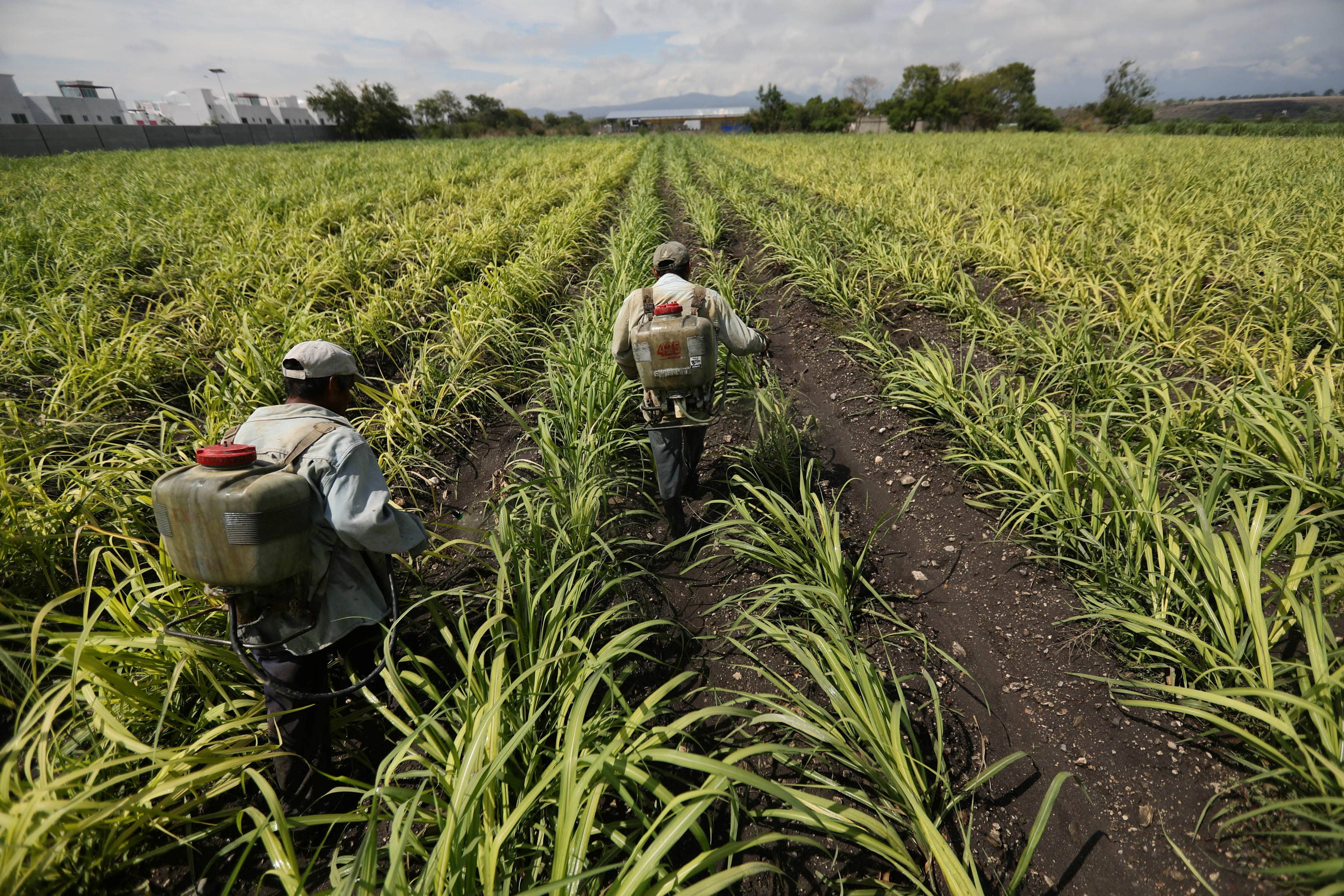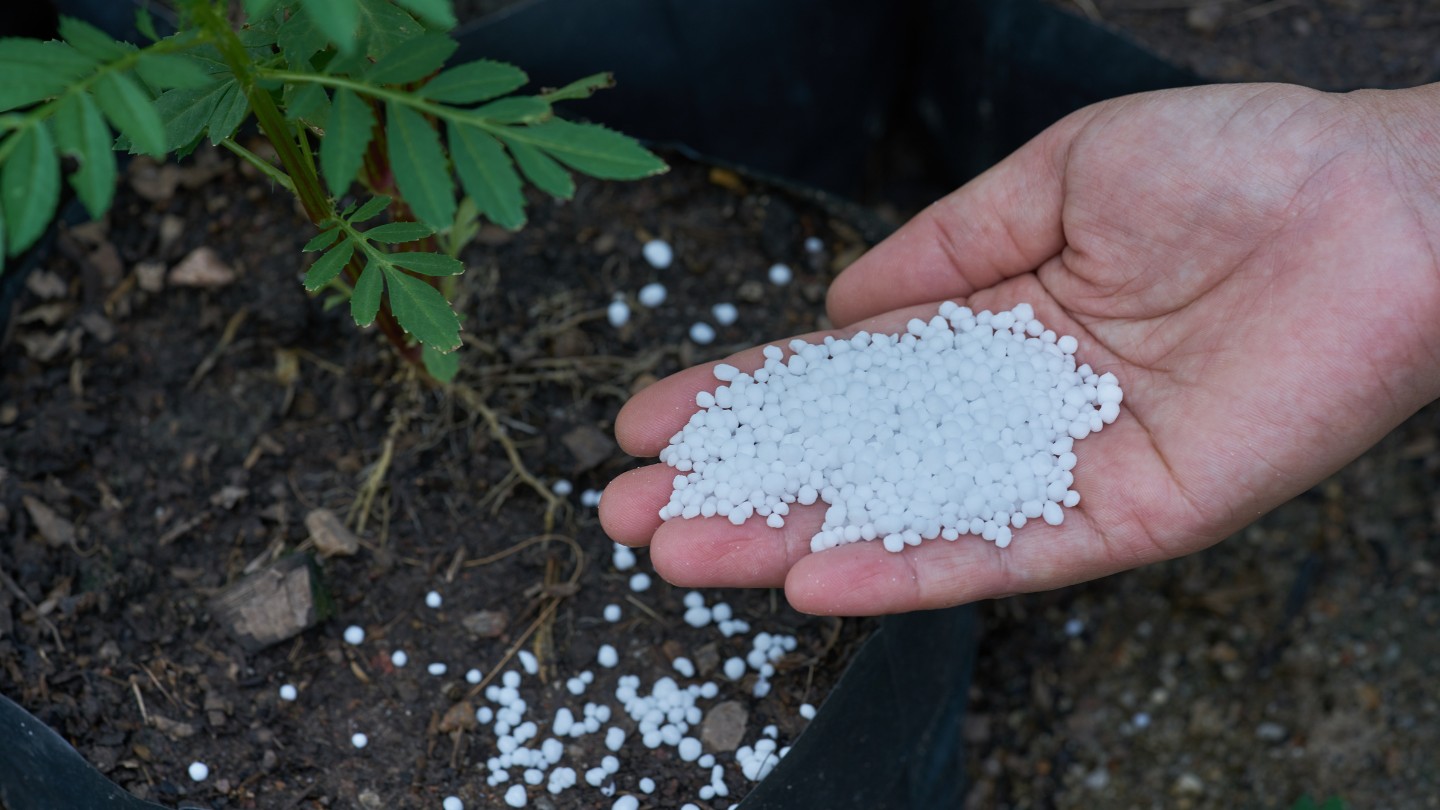

Articles
Why Are Fertilizer Prices So High
Modified: August 29, 2024
Discover why articles are exploring the reasons behind the skyrocketing fertilizer prices, shedding light on this critical issue in agriculture.
(Many of the links in this article redirect to a specific reviewed product. Your purchase of these products through affiliate links helps to generate commission for Storables.com, at no extra cost. Learn more)
Introduction
Fertilizers play a crucial role in modern agriculture, providing essential nutrients to crops to enhance their growth and yield. However, in recent years, farmers and the agriculture industry have been grappling with a significant challenge – the soaring prices of fertilizers. This sharp rise in fertilizer prices has raised concerns and created uncertainty in the agricultural sector.
Understanding the reasons behind the high fertilizer prices is essential for farmers, policymakers, and consumers. This article will explore the factors driving up fertilizer prices, the impact on the agriculture industry, and potential solutions to mitigate this issue.
High fertilizer prices can be attributed to several factors, ranging from global supply and demand dynamics to weather conditions and rising costs of raw materials. These factors have collectively created a perfect storm, leading to inflated prices that are impacting farmers and the economy as a whole.
Firstly, the global supply and demand for fertilizers have a significant influence on pricing. As the global population continues to grow, there is an increasing need for food production, which, in turn, drives the demand for fertilizers. Rapid economic growth in emerging markets like China and India has further heightened this demand.
…
…
Key Takeaways:
- High fertilizer prices are driven by global supply and demand, weather conditions, rising raw material costs, transportation expenses, shifting agricultural practices, and growing demand. These factors impact farmers, rural economies, and global food security.
- Potential solutions to mitigate high fertilizer prices include enhancing production efficiency, promoting sustainable practices, investing in research, improving distribution networks, providing subsidies, fostering international cooperation, and promoting farmer education. Collaboration among stakeholders is crucial for a resilient and affordable fertilizer market.
Read more: Why Is HVAC So Expensive
Factors driving up fertilizer prices
Several factors contribute to the rising costs of fertilizers, making them more expensive for farmers and the agriculture industry as a whole. Understanding these factors is crucial for navigating the challenges posed by high fertilizer prices.
1. Global supply and demand: The demand for fertilizers has been steadily increasing due to population growth, urbanization, and changing dietary preferences. This rising demand, coupled with limited production capacity, puts pressure on the global supply. As a result, fertilizer prices rise due to the scarcity of available products.
2. Weather conditions: Extreme weather events, such as droughts, floods, and hurricanes, significantly impact the availability and production of fertilizers. For instance, droughts can limit the water supply necessary for fertilizer production, while floods can disrupt transportation routes and infrastructure. These disruptions in production and supply lead to higher prices.
3. Rising costs of raw materials: Fertilizers are made from various raw materials, such as nitrogen, phosphorus, and potassium. The prices of these raw materials have been steadily increasing due to factors like inflation, market speculation, and trade disputes. The higher costs of raw materials directly contribute to the overall cost of producing fertilizers.
4. Increased transportation expenses: Fertilizer production often involves sourcing raw materials from different regions and distributing the final products to farms worldwide. The rising costs of fuel, freight, and shipping have a direct impact on transportation expenses, making fertilizers more expensive to transport and distribute.
5. Shift in agricultural practices and growing demand: The agricultural industry has witnessed a shift towards more intensive and specialized farming practices, requiring larger quantities of fertilizers. Additionally, the growing demand for biofuels and alternative crops further increases the need for fertilizers. This increased demand puts upward pressure on prices.
6. Government policies and regulations: Government policies and regulations, such as import/export restrictions, subsidies, and taxes, can influence fertilizer prices. Changes in these policies can disrupt market dynamics and lead to price fluctuations.
The combination of these factors has created a challenging environment for farmers and the agriculture industry. High fertilizer prices can have significant implications for food production, farmer profitability, and global food security.
In the next sections, we will explore the impacts of high fertilizer prices on farmers and the agricultural industry, as well as potential solutions to mitigate these challenges.
Impact of global supply and demand
The global supply and demand dynamics have a profound impact on fertilizer prices. As the world’s population continues to grow and urbanization accelerates, there is an increasing demand for food production. This demand, in turn, drives the need for fertilizers to enhance crop yields and meet the growing agricultural needs.
The rising global population, particularly in emerging markets, has led to an increased demand for food, putting pressure on farmers to increase their crop productivity. To meet this demand, farmers heavily rely on fertilizers to provide essential nutrients to their crops, such as nitrogen, phosphorus, and potassium.
However, the supply of fertilizers is limited. The production capacity of major fertilizer manufacturers can only meet a certain amount of demand, leading to a situation where demand outpaces supply. This scarcity drives up fertilizer prices, as farmers are willing to pay a premium to secure the necessary fertilizers for their crops.
Moreover, rapid economic growth in emerging markets, such as China and India, has further heightened the demand for fertilizers. These countries, with their massive populations, are increasingly consuming more food, which requires increased agricultural production. As a result, the demand for fertilizers has surged, causing prices to escalate.
Additionally, factors like trade imbalances and currency fluctuations can further exacerbate the impact of supply and demand dynamics on fertilizer prices. Suppliers may prioritize selling fertilizers to regions offering higher prices, creating imbalances in the global market. Furthermore, fluctuations in exchange rates between countries can affect the affordability and accessibility of imported fertilizers.
The impact of global supply and demand on fertilizer prices is not limited to the agricultural sector. Higher fertilizer prices have ripple effects throughout the entire food supply chain. Consumers may experience increased food prices, as the costs of production are passed on to them. This has implications for food security, particularly in regions where affordability and access to nutritious food are already challenging.
It is crucial for policymakers, farmers, and stakeholders in the agriculture industry to address the challenges posed by the increasing global supply and demand for fertilizers. This can be done through strategic planning, investment in sustainable agricultural practices, and measures to improve fertilizer production and distribution efficiency.
In the following sections, we will delve into other factors driving up fertilizer prices, such as weather conditions, rising costs of raw materials, and transportation expenses, and explore their impacts on the agriculture industry.
Influence of weather conditions
Weather conditions have a significant influence on fertilizer prices. Extreme weather events, such as droughts, floods, hurricanes, and severe storms, can disrupt both the production and distribution of fertilizers, leading to higher prices and supply chain disruptions.
Droughts, for example, significantly impact the availability of water, which is a critical resource in fertilizer production. Water scarcity can hinder the production process and limit the supply of fertilizers. As a result, fertilizer manufacturers may need to allocate resources differently or reduce production, causing a decrease in supply and subsequent price increase.
Similarly, floods and heavy rains can disrupt transportation routes and infrastructure, making it difficult to transport fertilizers from production facilities to farms. Floods can damage roads, railways, and storage facilities, causing delays and disruptions in fertilizer delivery. These logistical challenges can increase transportation costs and decrease the availability of fertilizers, driving up prices.
In regions heavily reliant on seasonal weather patterns for agriculture, deviations from normal weather conditions can also impact fertilizer prices. For instance, if a region experiences an unexpectedly long and cold winter, farmers may delay their planting schedules, leading to a decrease in fertilizer demand. This drop in demand can result in excess fertilizer supplies, potentially causing prices to decline. On the other hand, if a region encounters an early and warm spring, farmers may accelerate their planting schedules, driving up fertilizer demand and prices in a shorter span of time.
Climate change also plays a role in influencing weather patterns, which can have long-term implications for fertilizer production and prices. Changing climatic conditions may lead to shifts in agricultural regions, affecting the availability and suitability of land for crop production. This can disrupt fertilizer supply chains and production processes, further contributing to price fluctuations.
The influence of weather conditions on fertilizer prices underscores the vulnerability of the agriculture industry to climate-related risks. To mitigate the impact of weather events on fertilizer prices, farmers can explore measures such as diversification of crops, adoption of climate-resilient farming practices, and investing in irrigation systems to reduce reliance on rainfall. Additionally, governments and stakeholders can invest in research and development for climate-smart agriculture practices and infrastructure resilience to ensure a more stable supply of fertilizers.
In the next section, we will discuss the rising costs of raw materials and how they contribute to the escalation of fertilizer prices.
Rising costs of raw materials
The increasing costs of raw materials are a significant factor driving up fertilizer prices. Fertilizers are composed of various essential nutrients like nitrogen, phosphorus, and potassium, which are sourced from raw materials such as natural gas, phosphate rock, and potash.
One of the main raw materials used in fertilizer production is natural gas, which is a primary source of nitrogen fertilizer. Natural gas prices have been on the rise due to factors such as inflation, geopolitical tensions, and changes in the global energy landscape. As a result, the cost of producing nitrogen-based fertilizers increases, leading to higher fertilizer prices.
Phosphate rock and potash are other critical raw materials used in the production of fertilizers. The prices of these raw materials have also been steadily increasing due to various factors. Geological limitations and the depletion of high-grade phosphate rock deposits have led to supply constraints, driving up prices. Similarly, the potash market faces challenges such as limited availability and production capacity, contributing to the increase in raw material costs.
In addition to these factors, market speculation and trade disputes can further impact the prices of raw materials. Speculation in commodity markets can create price volatility, affecting the affordability and availability of raw materials for fertilizer production. Trade disputes and tariffs on raw material imports can also disrupt the supply chain and increase costs, indirectly influencing fertilizer prices.
The rising costs of raw materials directly affect the overall cost of fertilizer production. Fertilizer manufacturers need to cover these higher costs, leading to increased prices for the end consumers – farmers. This, in turn, puts pressure on farmers’ budgets and can have far-reaching implications for their profitability and financial sustainability.
To address the issue of rising raw material costs, fertilizer manufacturers are exploring options such as increasing production efficiency, adopting new technologies, and diversifying their feedstock sources. Sustainable mining practices and research into alternative raw materials are also being pursued to reduce dependency on scarce resources.
In the next section, we will discuss the impact of increased transportation expenses on fertilizer prices and the agriculture industry.
Read more: Why Are Rugs So Expensive
Increased transportation expenses
The rising costs of transportation have a direct impact on fertilizer prices. Fertilizer production involves sourcing raw materials from different locations and distributing the final products to farms around the world. Any increase in transportation expenses can significantly contribute to the overall cost of fertilizers.
One of the main factors driving up transportation costs is the price of fuel. Fuel prices have steadily increased in recent years due to various factors such as geopolitical tensions, supply disruptions, and changes in government policies. As a result, transportation companies and logistics providers face higher fuel costs, which are often passed on to consumers, including fertilizer manufacturers and ultimately, farmers.
The transportation of fertilizers involves multiple modes, including road, rail, and maritime. Each mode of transportation has its own set of associated costs. For instance, road transportation is generally more expensive than rail transportation for long distances, while maritime transportation can be cost-effective for bulk shipments but may experience delays or disruptions due to adverse weather conditions or port congestion.
In addition to fuel prices, other factors can contribute to increased transportation expenses. Infrastructure and maintenance costs, tolls and fees, regulatory compliance, and labor costs all impact the overall cost of transportation. Changes in regulations, such as stricter emission standards, may require transportation companies to invest in newer and more efficient vehicles, adding to their operating expenses.
Furthermore, fluctuations in global trade patterns and geopolitical events, such as trade disputes, can disrupt transportation routes and increase costs. Import and export restrictions, tariffs, and customs procedures can result in delays and additional expenses for manufacturers and distributors involved in the global fertilizer trade.
Increased transportation expenses have a cascading effect on the agriculture industry and farmers. Higher transportation costs can lead to increased prices of fertilizers, making them less affordable for farmers. This, in turn, affects their ability to invest in fertilizers and may impact crop yields and profitability.
To mitigate the impact of increased transportation expenses on fertilizer prices, efforts can be made to improve transportation infrastructure, promote sustainable logistics practices, and explore alternative modes of transportation. Efficient supply chain management and strategic partnerships within the industry can also help streamline transportation processes and minimize costs.
In the following section, we will examine the shift in agricultural practices and growing demand as factors contributing to the rise in fertilizer prices.
Consider using alternative organic fertilizers such as compost, manure, or fish emulsion to reduce reliance on expensive synthetic fertilizers. These options can provide essential nutrients to your plants at a lower cost.
Shift in agricultural practices and growing demand
The shift in agricultural practices and growing demand for food are significant factors driving up fertilizer prices. The agricultural industry has undergone a transformation in recent years, leading to increased fertilizer use and a higher demand for agricultural products.
One major shift has been the move towards more intensive and specialized farming practices. Farmers are adopting technologies and techniques to optimize crop yields and improve efficiency. This includes the use of high-yield seeds, precision agriculture, and the application of fertilizers to maximize nutrient uptake by plants. With increased emphasis on maximizing productivity, the demand for fertilizers has risen accordingly.
Furthermore, there has been a growing demand for biofuels and alternative crops. The renewable energy sector has seen significant growth, leading to increased cultivation of crops like corn and sugarcane for biofuel production. These crops require larger quantities of fertilizers to support their growth, adding to the overall demand for fertilizers.
A changing global dietary pattern has also contributed to the growing demand for agricultural products. As developing countries experience economic growth and an increase in disposable incomes, there is a shift in dietary preferences towards more protein-rich diets. This change in consumption patterns creates a higher demand for livestock feed, which, in turn, drives the demand for fertilizer-intensive crops like soybeans and corn to feed livestock.
Additionally, the growing global population plays a significant role in driving up fertilizer demand. As the population continues to increase, there is a greater need for food production. To meet this demand, farmers are expanding their cultivation areas and using more fertilizers to increase crop yields.
This shift in agricultural practices and growing demand for food has placed immense pressure on the fertilizer industry. Meeting the increased demand requires greater production and supply of fertilizers, which comes with its own set of challenges and costs. To fulfill the demand, fertilizer manufacturers need to invest in expanding their production capacity, enhancing their distribution network, and addressing logistical challenges.
The growing demand for fertilizers has led to limited availability and higher prices. Farmers face the challenge of balancing their need for fertilizers with the increasing costs, affecting their overall profitability and financial sustainability. Without access to affordable fertilizers, farmers may struggle to achieve optimal productivity and maintain their competitiveness in the market.
In the next section, we will discuss the role of government policies and regulations in influencing fertilizer prices.
Government policies and regulations
Government policies and regulations play a significant role in influencing fertilizer prices. These policies can have direct or indirect impacts on the production, distribution, and pricing of fertilizers.
One key area where government policies can influence fertilizer prices is through import and export restrictions. Some governments impose limitations on the import or export of fertilizers to protect domestic markets or ensure national food security. These restrictions can disrupt global fertilizer trade and create imbalances in supply and demand, leading to price fluctuations.
Additionally, government subsidies and incentives can affect fertilizer prices. Many governments provide subsidies or financial support to farmers, particularly in developing countries, to reduce the cost of purchasing fertilizers. These subsidies aim to encourage farmers to use fertilizers and boost agricultural productivity. However, changes to subsidy programs or delays in subsidy disbursement can impact the affordability and accessibility of fertilizers for farmers.
Government regulations related to environmental and safety standards also impact fertilizer production and pricing. Stringent regulations may require fertilizer manufacturers to invest in advanced technologies or modify their production processes to comply with environmental and safety guidelines. These compliance costs can be passed on to consumers, leading to higher fertilizer prices.
Taxes and duties are another aspect of government policies that can affect fertilizer prices. Governments may impose taxes or duties on the import or sale of fertilizers to generate revenue or protect domestic industries. These additional costs are usually passed on to the end consumers, resulting in higher prices.
Furthermore, government policies related to land use, crop rotation, and nutrient management practices can impact fertilizer demand and prices. For instance, policies that encourage sustainable agricultural practices and the use of organic fertilizers may influence farmers’ fertilizer choices, potentially leading to shifts in demand and affecting pricing dynamics.
Government interventions to stabilize fertilizer prices can also occur. In some cases, governments may establish price controls or implement price stabilization mechanisms to prevent excessive price fluctuations. These measures aim to protect farmers from sudden price spikes or ensure stable fertilizer supplies. However, these interventions may have unintended consequences, such as distorting market dynamics or discouraging private investment in fertilizer production.
Government policies and regulations need to strike a delicate balance between ensuring a fair and competitive market for fertilizers and supporting the needs of farmers and the agricultural sector. By taking into account the long-term sustainability of fertilizer production, promoting efficient distribution networks, and fostering innovation in the industry, policymakers can help foster an environment that lessens the impact of government policies on fertilizer prices.
In the next section, we will explore the effects of high fertilizer prices on farmers and the agriculture industry.
Effects on farmers and agriculture industry
The high prices of fertilizers have significant effects on farmers and the agriculture industry, impacting various aspects of agricultural operations and the overall profitability and sustainability of farming.
1. Increased production costs: High fertilizer prices directly translate into increased production costs for farmers. Fertilizers are a crucial input in modern agriculture, and farmers heavily rely on them to enhance crop growth and productivity. The rising costs of fertilizers put financial strain on farmers, affecting their ability to invest in other necessary inputs and technologies.
2. Decreased profitability: Higher production costs directly impact farmers’ profitability. When fertilizer prices rise, farmers may experience reduced profit margins or even face losses. This can be particularly challenging for small-scale and marginalized farmers who have limited financial resources and may struggle to absorb the additional costs.
3. Reduced agricultural productivity: Fertilizers are vital for maintaining soil fertility and providing essential nutrients to crops. When fertilizer prices become unaffordable, farmers may resort to reducing or cutting back on fertilizer applications. This can lead to decreased agricultural productivity as crops may not receive the optimal nutrient levels needed for healthy growth. Lower yields can ultimately affect food security and limit farmers’ ability to meet market demands.
4. Shifts in cropping patterns: High fertilizer prices can influence farmers’ cropping decisions. Farmers may opt for crops that require lower fertilizer inputs or switch to alternative farming practices that do not heavily rely on fertilizers. This shift in cropping patterns can have implications for agricultural diversity, rural economies, and regional food production.
5. Inequality among farmers: High fertilizer prices can exacerbate existing inequalities in the agriculture industry. Large-scale farmers with better access to financial resources may be better equipped to absorb the increased costs, while small-scale farmers with limited resources may struggle to afford the same level of inputs. This can further widen the gap between large and small farmers and perpetuate income inequality in the agricultural sector.
6. Implications for rural economies: The agriculture industry is often a significant contributor to rural economies. When farmers face financial challenges due to high fertilizer prices, the impact can be felt beyond the farm. Reduced agricultural output and profitability can lead to a decline in rural incomes, job losses, and a slowdown in economic growth in rural communities.
7. Global food prices: The impact of high fertilizer prices extends beyond individual farmers and has implications for global food prices. If fertilizer prices remain high, the increased costs of production can be passed on to consumers. This can result in higher food prices and potentially impact food affordability, particularly in regions where access to affordable and nutritious food is already a challenge.
Overall, the effects of high fertilizer prices on farmers and the agriculture industry highlight the importance of ensuring affordable and accessible fertilizers to support sustainable agricultural production. Policymakers, industry stakeholders, and farmers themselves must collaborate to find solutions and strategies to mitigate the effects of high fertilizer prices and promote a resilient and profitable agriculture sector.
In the next section, we will discuss potential solutions to alleviate the challenges posed by high fertilizer prices.
Read more: Why Is The Basement So Cold
Potential solutions to mitigate high fertilizer prices
The challenges posed by high fertilizer prices call for comprehensive solutions that address the underlying factors driving the price increases. Here are some potential strategies to mitigate the impact of high fertilizer prices:
1. Enhance fertilizer production efficiency: Fertilizer manufacturers can invest in research and development to improve production processes and enhance efficiency. This can help reduce production costs and, in turn, mitigate the upward pressure on fertilizer prices. Adopting advanced technologies and innovative manufacturing practices can lead to more cost-effective production and ensure a stable supply of fertilizers.
2. Promote sustainable agricultural practices: Encouraging farmers to adopt sustainable farming practices can help optimize fertilizer use and reduce dependence on high input levels. Practices such as precision agriculture, soil testing, and crop rotation can enhance nutrient management and minimize wastage. Integrated pest management techniques and organic farming practices can also help reduce the need for chemical fertilizers. Supporting farmers in implementing sustainable practices can contribute to long-term cost savings and mitigate the impact of high fertilizer prices.
3. Invest in research and innovation: Governments, agricultural institutions, and the private sector should continue to invest in research and innovation for fertilizers and crop nutrition. This includes developing new nutrient formulations, exploring alternative sources of nutrients, and improving fertilizer efficiency. Through research and development, the agricultural industry can discover new solutions to optimize fertilizer use and reduce costs while ensuring sustainable and productive farming practices.
4. Improve fertilizer distribution networks: Enhancing the efficiency of fertilizer distribution networks can help reduce transportation costs and minimize price markups along the supply chain. This can be achieved by investing in infrastructure development, improving logistics and storage facilities, and establishing strategic partnerships among fertilizer manufacturers, distributors, and farmers. Efficient distribution networks can help ensure the timely availability of fertilizers at competitive prices.
5. Support farmers through subsidies and financing: Governments can provide financial support and subsidies to farmers to alleviate the burden of high fertilizer prices. By offering targeted subsidies or low-interest financing options, governments can make fertilizers more affordable for farmers, especially small-scale and marginalized farmers. Subsidies can be coupled with awareness and training programs to promote responsible fertilizer use and encourage farmers to adopt sustainable farming practices.
6. Foster international cooperation and trade: Encouraging international cooperation and trade in fertilizers can help stabilize prices and ensure a reliable supply. Governments can collaborate to reduce trade barriers and harmonize regulations to facilitate the global movement of fertilizers. This can lead to increased market competition and greater availability of fertilizers at competitive prices.
7. Promote farmer education and awareness: Providing farmers with access to information, training, and educational resources on efficient fertilizer use and crop management can help optimize fertilizer applications. This can assist farmers in making informed decisions based on their specific crop and soil requirements, leading to better fertilization practices and cost savings.
Implementing these potential solutions requires a collaborative effort among governments, fertilizer manufacturers, farmers, and other stakeholders in the agriculture industry. By addressing the complex factors driving high fertilizer prices and adopting sustainable and efficient practices, the agriculture sector can mitigate the adverse effects and promote a more resilient and affordable fertilizer market.
NOTE: While every effort has been made to provide accurate and up-to-date information, this article is intended for informational purposes only and should not be considered as professional or financial advice. Please consult with a qualified expert or relevant authorities for specific guidance related to your situation.
Conclusion
The high prices of fertilizers pose significant challenges for farmers and the agriculture industry. Understanding the factors driving up fertilizer prices is crucial for finding effective solutions to mitigate their impact. Global supply and demand dynamics, weather conditions, rising costs of raw materials, increased transportation expenses, shifting agricultural practices, and growing demand all contribute to the escalation of fertilizer prices.
The consequences of high fertilizer prices are far-reaching. Farmers face increased production costs, reduced profitability, and potential decreases in agricultural productivity. The effects also extend to rural economies, global food prices, and the overall food security of nations.
To mitigate the challenges posed by high fertilizer prices, potential solutions can be implemented. Enhancing fertilizer production efficiency, promoting sustainable agricultural practices, investing in research and innovation, improving fertilizer distribution networks, providing subsidies and financing to farmers, fostering international cooperation and trade, and promoting farmer education and awareness are all avenues that can contribute to managing the impact of high fertilizer prices.
Collaboration among governments, fertilizer manufacturers, farmers, and other stakeholders in the agriculture industry is essential. By addressing the underlying factors, improving efficiency, and promoting sustainable practices, the agriculture sector can strive for a more affordable and resilient fertilizer market.
It is important for policymakers, industry leaders, and farmers to continuously evaluate and adapt their strategies to navigate the challenges of high fertilizer prices. By doing so, they can work towards ensuring a sustainable and productive agricultural sector that meets the growing demand for food while maintaining the economic viability of farms.
Ultimately, finding a balance between affordability, accessibility, and environmental sustainability in the fertilizer market is crucial for sustainable agricultural development and a secure future for farmers and the agriculture industry.
Frequently Asked Questions about Why Are Fertilizer Prices So High
Was this page helpful?
At Storables.com, we guarantee accurate and reliable information. Our content, validated by Expert Board Contributors, is crafted following stringent Editorial Policies. We're committed to providing you with well-researched, expert-backed insights for all your informational needs.














0 thoughts on “Why Are Fertilizer Prices So High”